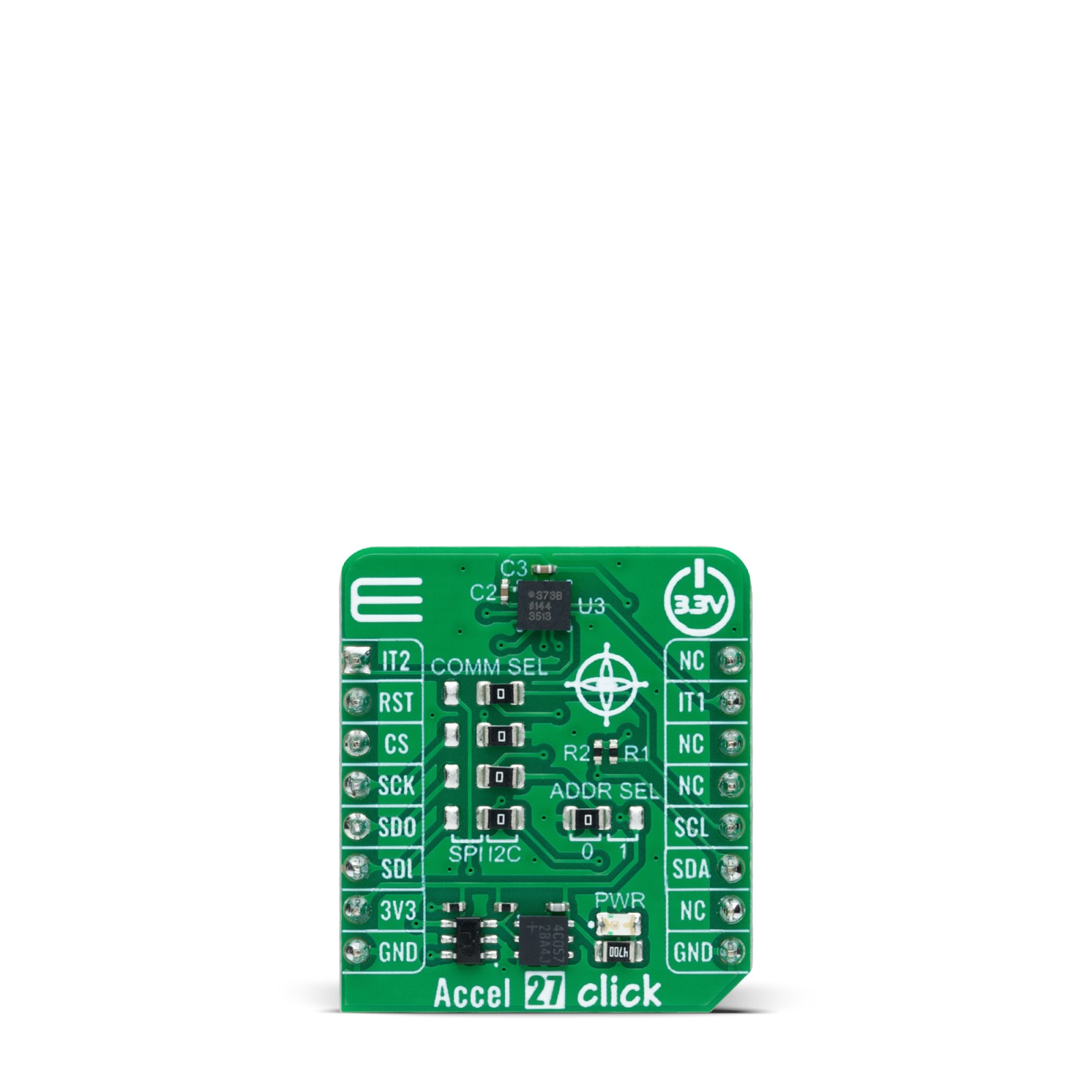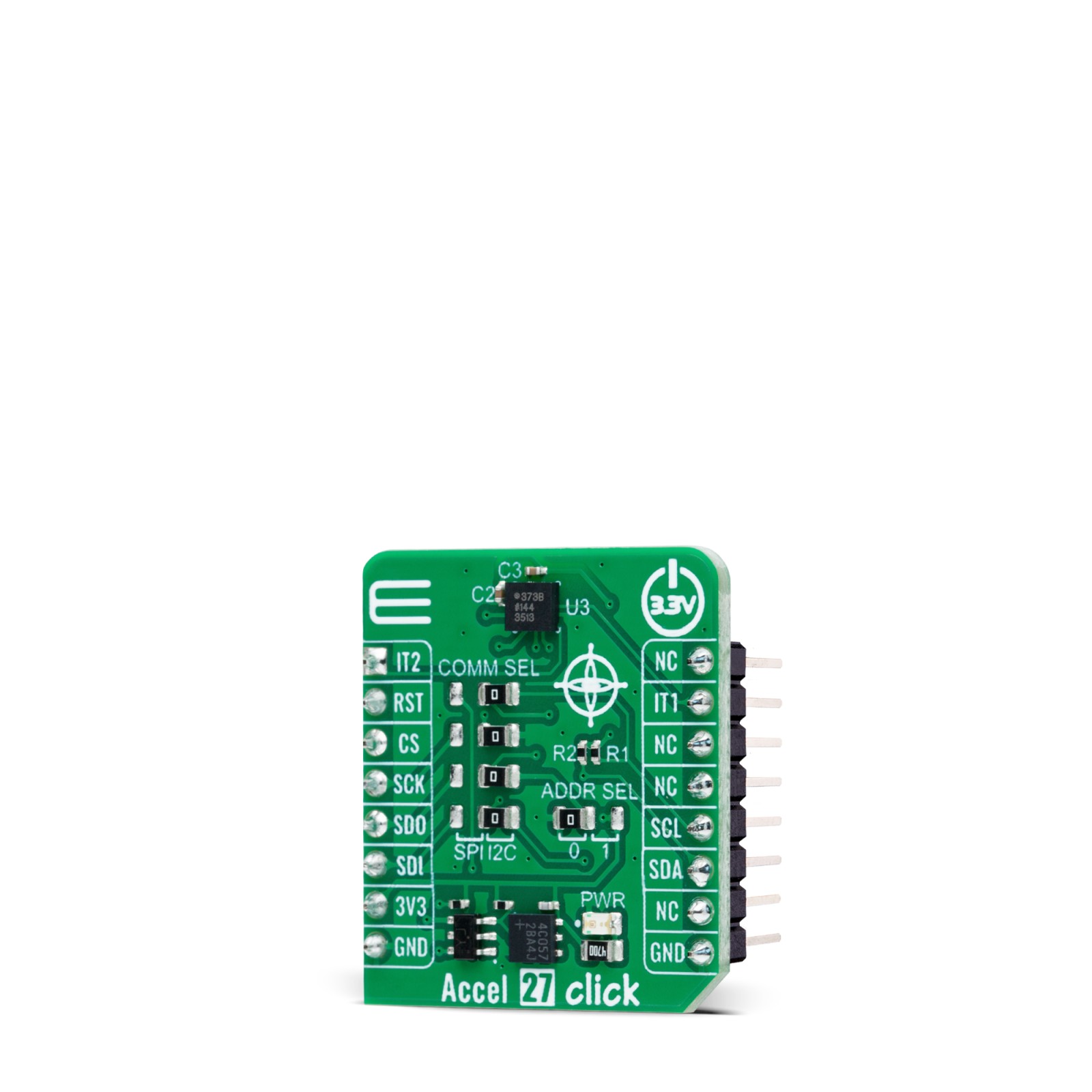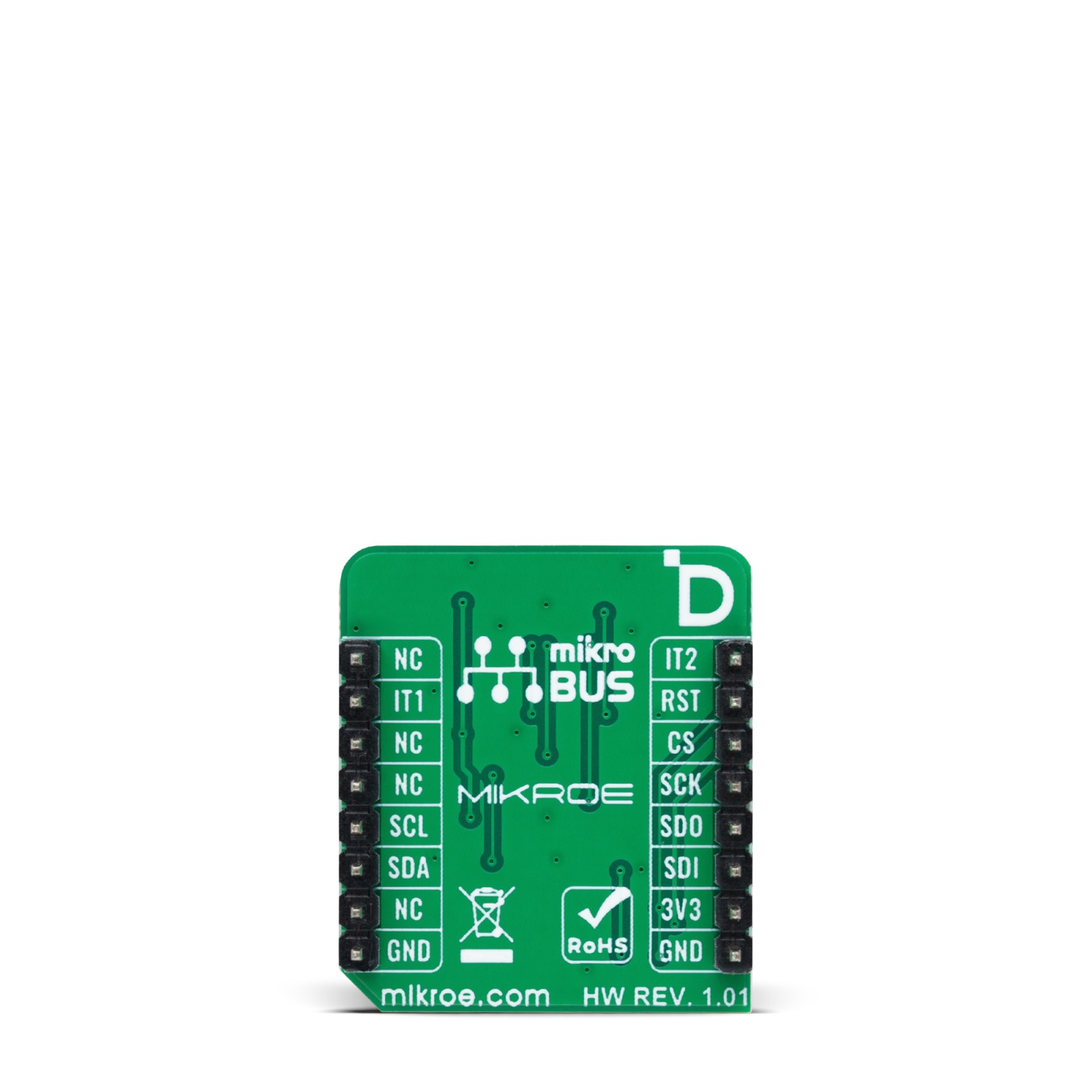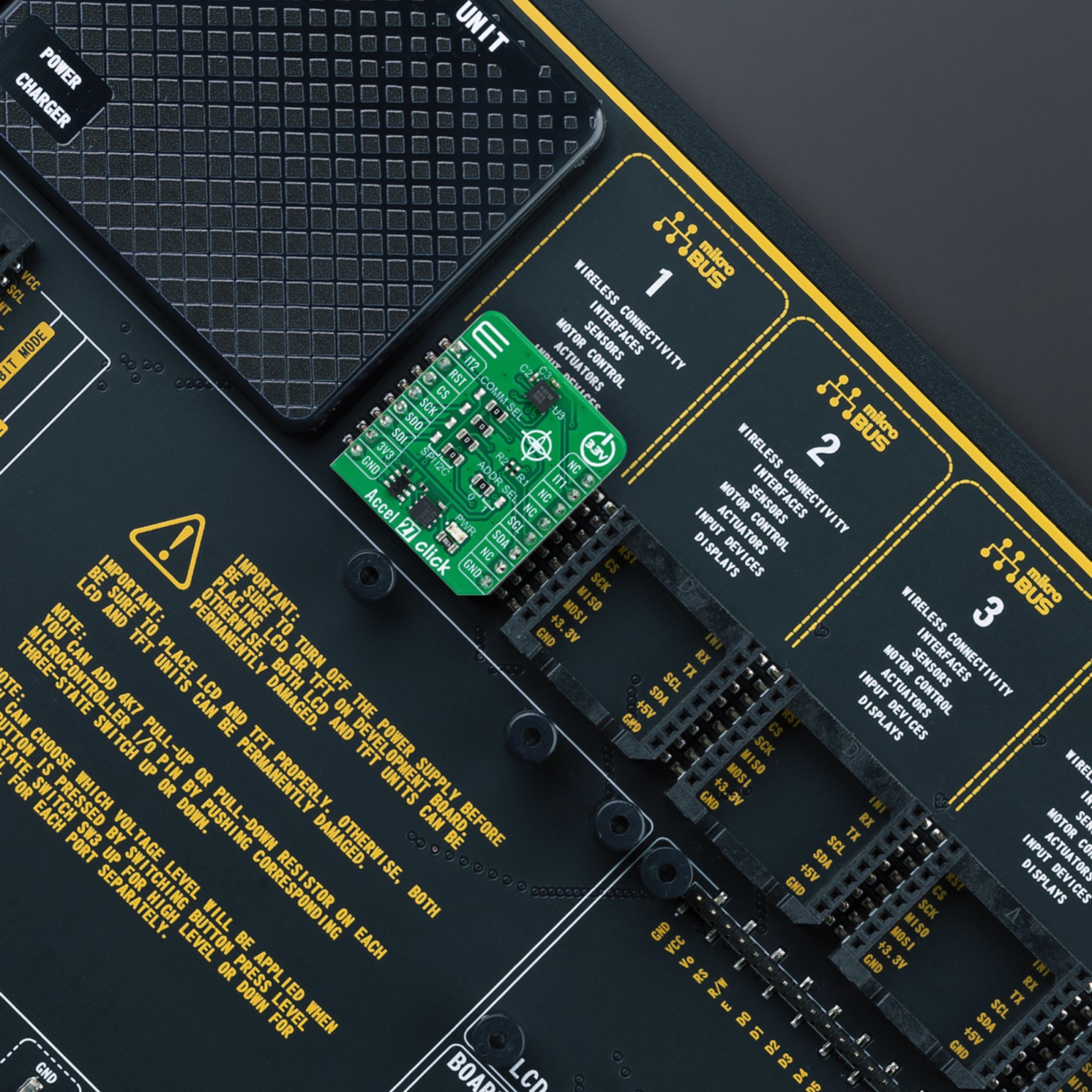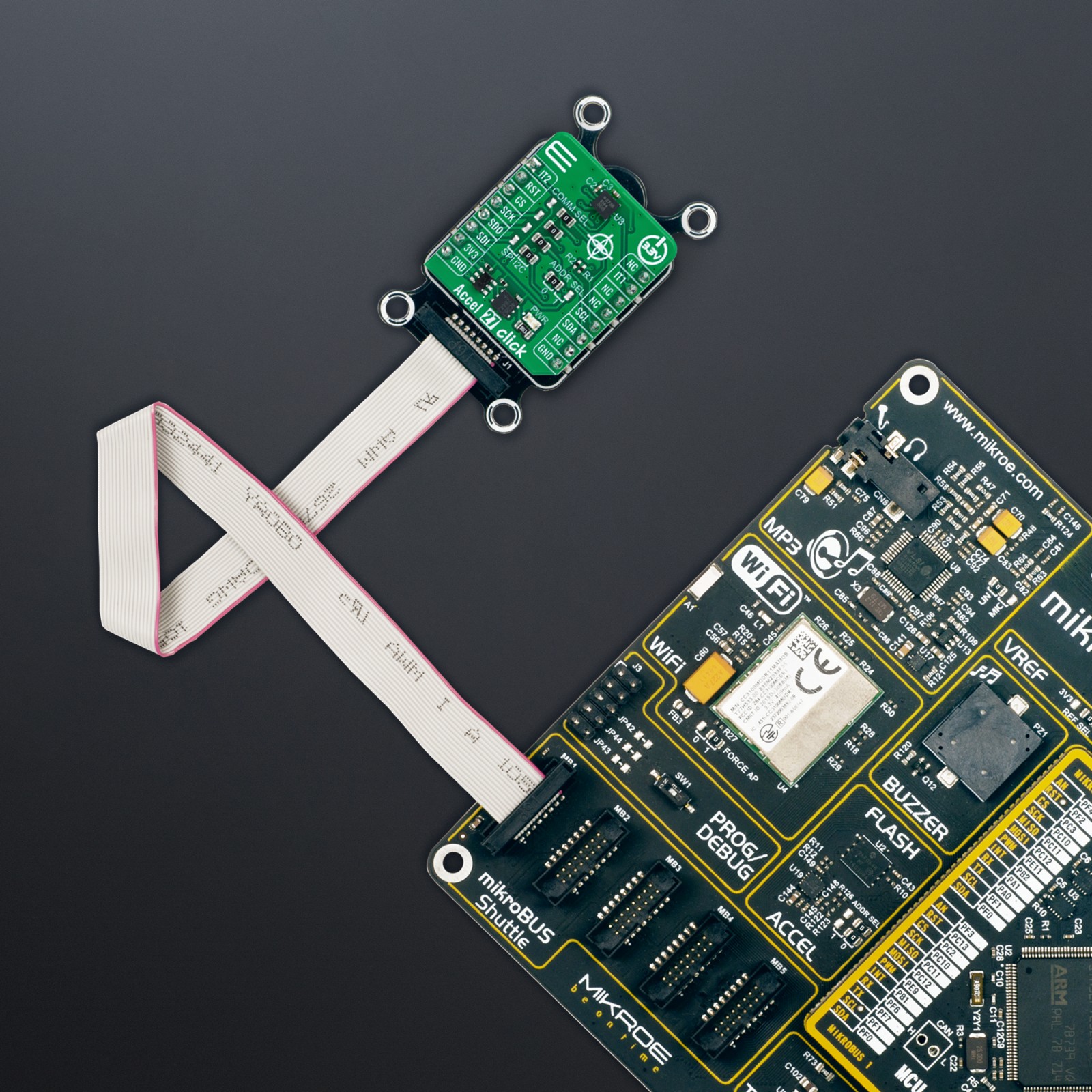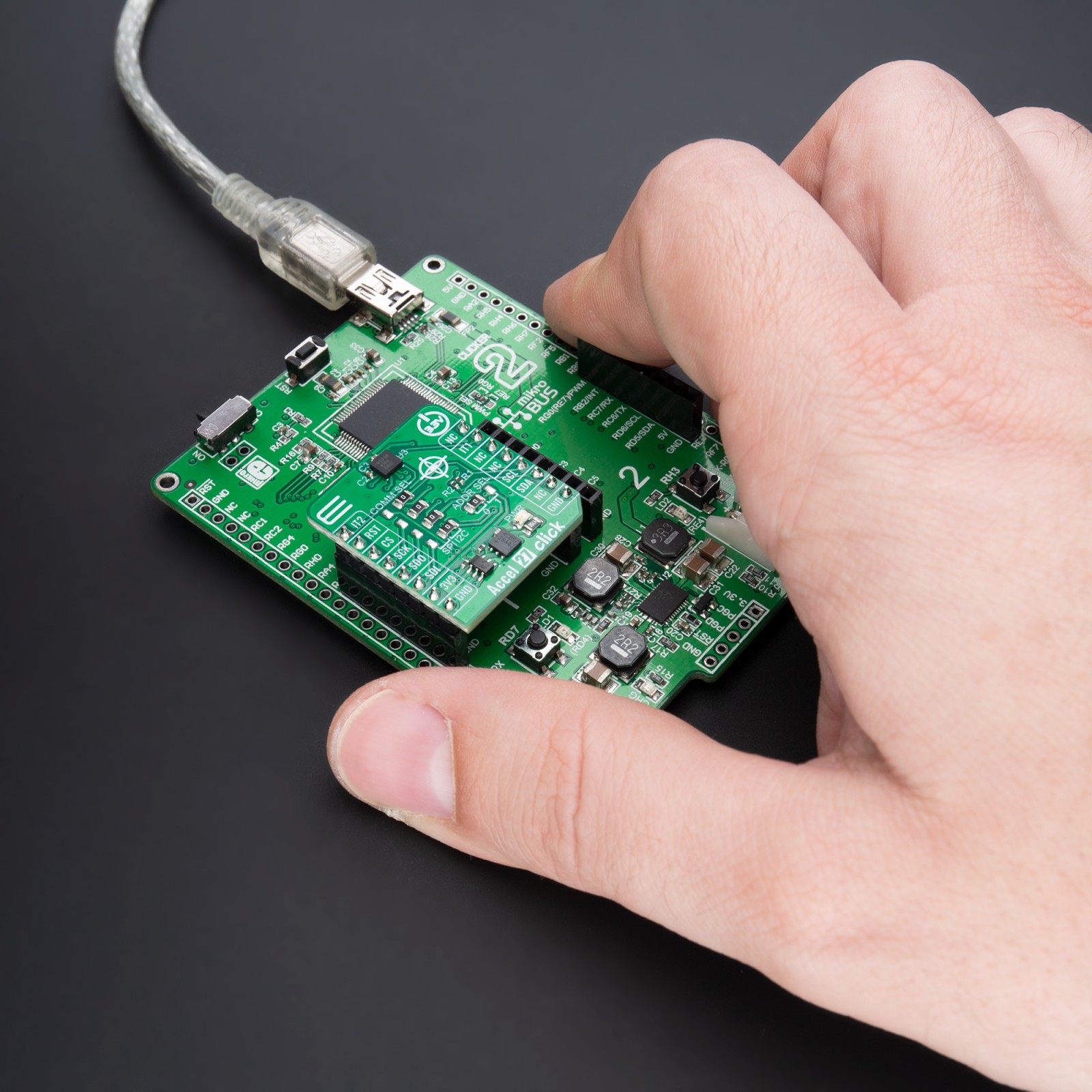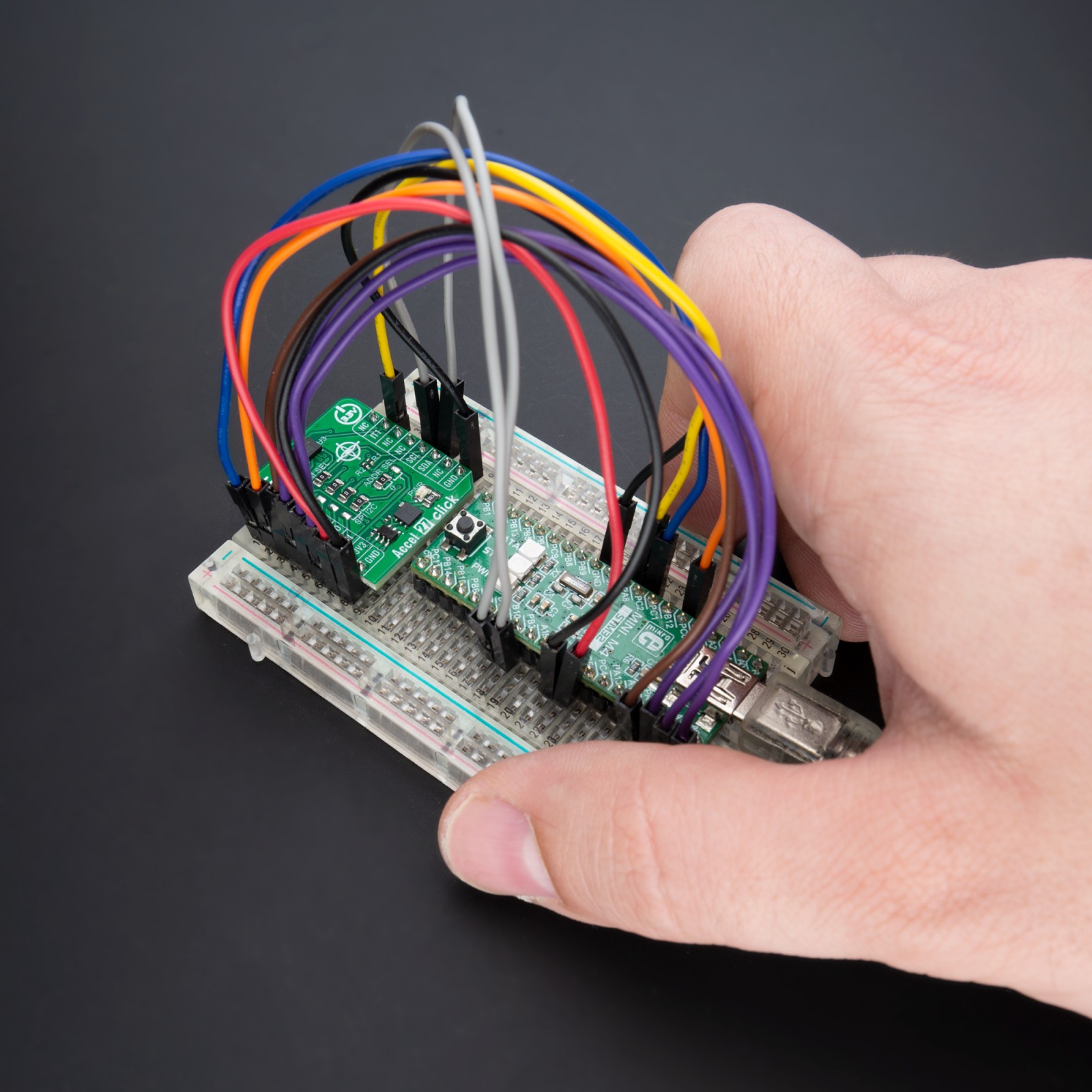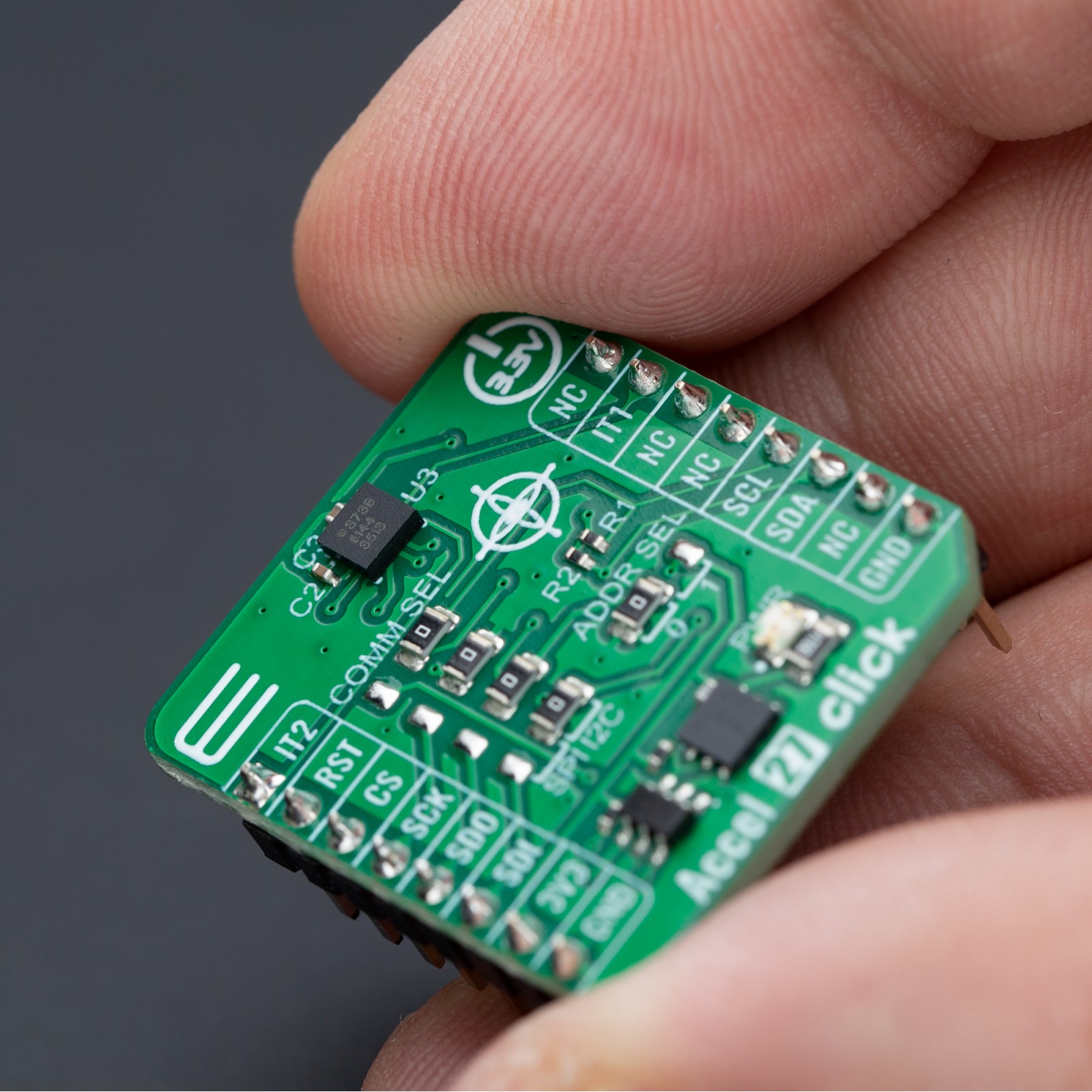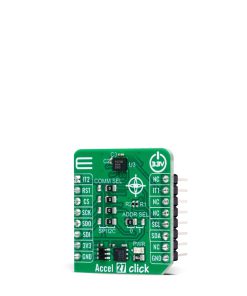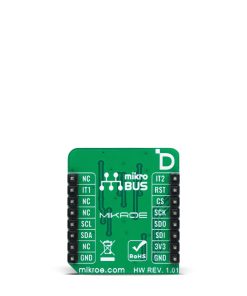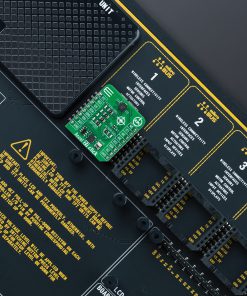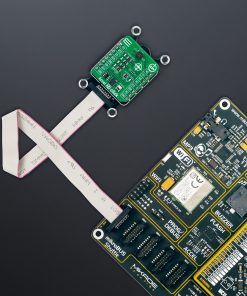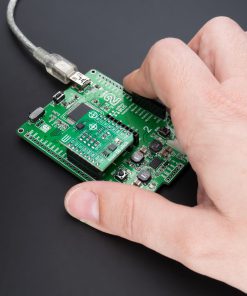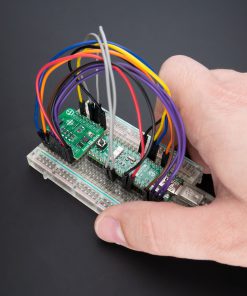Subtotal: R1,750.00
Accel 27 Click
R935.00 ex. VAT
Accel 27 Click is a compact add-on board that contains an acceleration sensor. This board features the ADXL373, a three-axis MEMS ±400g accelerometer from Analog Devices. In addition to its ultra-low power consumption, the ADXL373 enables impact detection while providing system-level power reduction. It offers 12-bit output data at 200mg/LSB scale factor with a configurable host interface that supports SPI and I2C serial communication. This Click board™ is suitable for multiple applications such as motion-activated functions, impact, and shock detection, medical IoT applications that require ultra-low-power Wake-Up on the motion, and more.
Accel 27 Click is fully compatible with the mikroBUS™ socket and can be used on any host system supporting the mikroBUS™ standard. It comes with the mikroSDK open-source libraries, offering unparalleled flexibility for evaluation and customization. What sets this Click board™ apart is the groundbreaking ClickID feature, enabling your host system to seamlessly and automatically detect and identify this add-on board.
Stock: Lead-time applicable.
| 5+ | R888.25 |
| 10+ | R841.50 |
| 15+ | R794.75 |
| 20+ | R764.83 |

 tRF Click
tRF Click  Alcohol 3 Click
Alcohol 3 Click 